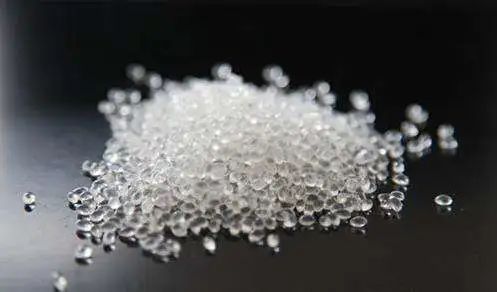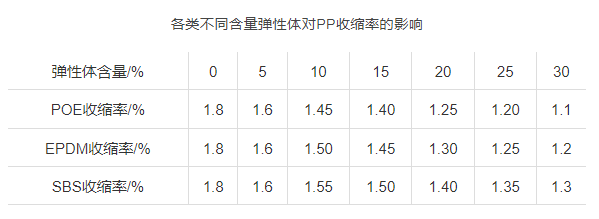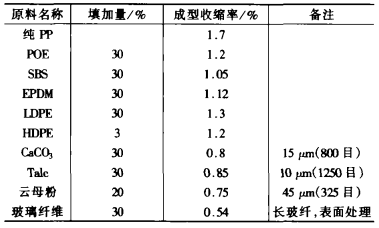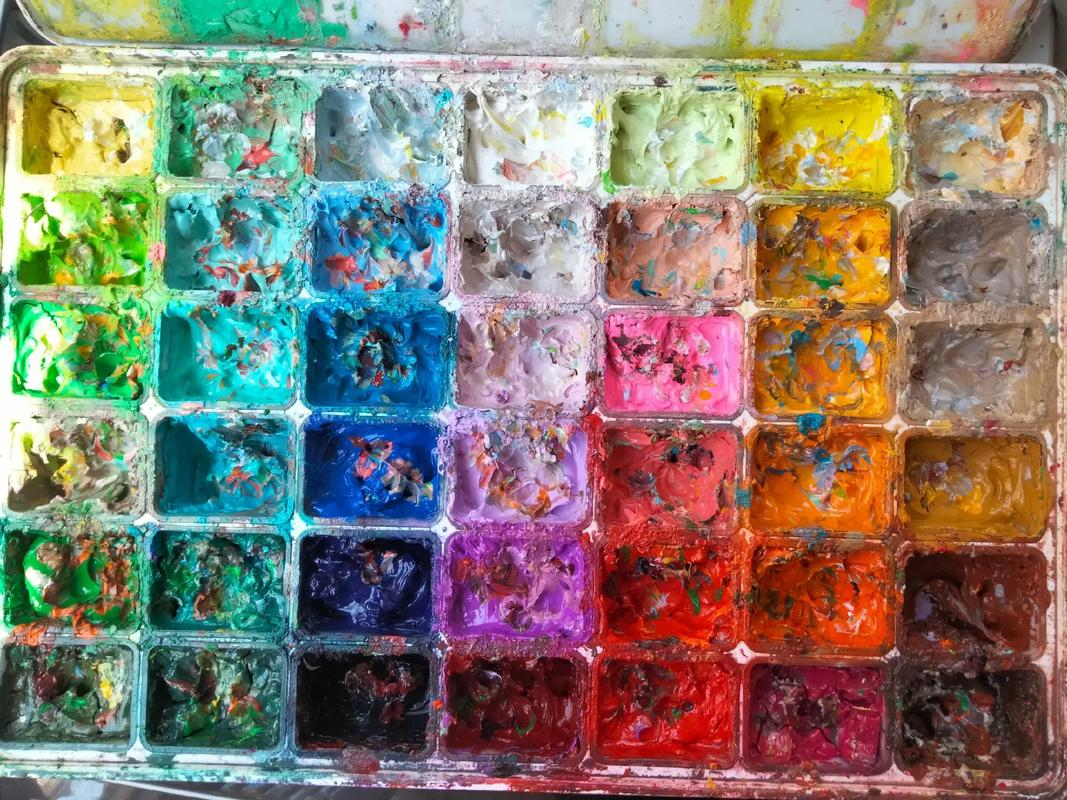Is polypropylene shrinkage difficult to control? It turns out that these five factors are at fault
May 29, 2024, 11:58 AM
TDD-global
6256
Polypropylene is one of the most widely used types of general-purpose plastics. It has the advantages of low density, good rigidity, resistance to deflection, chemical corrosion resistance, and good insulation. Its shortcomings are poor low temperature impact performance, easy aging, and large molding shrinkage.
Polypropylene is one of the most widely used types of general-purpose plastics. It has the advantages of low density, good rigidity, resistance to deflection, chemical corrosion resistance, and good insulation. Its shortcomings are poor low temperature impact performance, easy aging, and large molding shrinkage.
The low temperature impact properties, molding shrinkage and heat aging properties of polypropylene can be improved by modification. If the shrinkage rate can be controlled well, it is of great significance to the promotion and use of polypropylene modified materials, and it is also an important aspect of ensuring product quality. In particular, the use of modified polypropylene to replace traditional engineering plastics, the shrinkage rate is very important.
Polypropylene modification has mature technology in China, but the analysis of shrinkage rate is relatively scattered. Xiaoba integrates the existing information, and makes some elaborations on this issue, hoping to provide ideas for everyone in the industry.
The large molding shrinkage of polypropylene is a major disadvantage of polypropylene itself, which is mainly due to the high crystallinity of polypropylene. The specific gravity of the crystallized polypropylene increases and the volume decreases. The specific gravity is 0.851 and 0.936 when the crystallinity is 0% and 100%, respectively. Therefore, the molding shrinkage of pure PP is generally between 1.7-2.2.
Controlling the molding shrinkage of polypropylene is mainly to control the crystallinity of its raw materials during molding: the smaller the crystallinity, the smaller the molding shrinkage; conversely, the higher the crystallinity, the greater the molding shrinkage.

In polypropylene modified plastics, the addition of various modifiers destroys the original crystallinity of polypropylene to varying degrees, thereby changing the original molding shrinkage of polypropylene.
1. The influence of rubber on the shrinkage rate of polypropylene

With the increase of rubber content, the molding shrinkage showed a downward trend. This is mainly because the addition of rubber destroys the crystallinity of polypropylene itself, resulting in a decrease in the molding shrinkage rate, and the three elastomers POE, EPDM, and SBS also have different effects on the molding shrinkage rate.
picture
When the elastomer content is less than 5%, the effects of various types of elastomers on the shrinkage rate of PP are basically the same. Only after the elastomer content exceeds 5%, the degree of influence of different elastomer varieties is different, and the order of influence on the shrinkage rate is POE>EPDM>SBS, which is consistent with the toughening effect of elastomers on PP.
In PP, inorganic fillers and elastomers are mixed and added, and the shrinkage rate reduction effect is better.
2. The influence of mineral filling on the molding shrinkage of polypropylene modified material
Mineral additives for polypropylene mainly include calcium carbonate, talc, mica powder, etc. There are three main reasons for the influence of mineral additives on the molding shrinkage of polypropylene modified materials:
One is that the mineral additive itself does not shrink, and its addition reduces the shrinkage rate of the polypropylene modified material from the overall proportion; the second is that the addition of the mineral additive will inevitably affect the crystallinity of polypropylene, thereby affecting the shrinkage rate; The third is fine minerals After the agent is added, it acts as a nucleating agent, changes the structural state of polypropylene, prevents the formation of large spherulites, and also affects the molding shrinkage of polypropylene.
1) The shape of the filler
Different shapes of inorganic fillers have different effects on shrinkage, and the specific order of influence is flake > needle > particle > spherical.
2) Particle size of filler
Different particle sizes of the same filler have different effects on shrinkage. The smaller the particle size, the greater the reduction in shrinkage. Taking talc-filled PP (20% talc + 8% POE) as an example, the effect of different particle sizes of talc on shrinkage is as follows.
3) Surface treatment of filler
For the same filler, whether surface treatment is performed when compounding with the resin has different effects on the shrinkage rate. The filler with surface treatment has a greater effect on the shrinkage rate.
4) The amount of filler
Different amounts of the same filler have different effects on the shrinkage rate. The greater the amount of filler added, the greater the decrease in shrinkage rate.
3. The influence of fiber on the molding shrinkage of polypropylene modified material
The fibers referred to here include various types of inorganic fibers and organic fibers. Taking short glass fiber reinforcement as an example, adding different content of glass fiber to PP resin can greatly reduce its molding shrinkage.
Compared with short glass fibers, the advantages of long glass fiber reinforced polymers are lower shrinkage and consistent shrinkage in both longitudinal and transverse directions. The shrinkage of whisker reinforced polymers is lower than that of glass fiber reinforced polymers.
Glass fiber has the greatest influence on the molding shrinkage of polypropylene modified material. When the glass fiber content reaches more than 30%, the molding shrinkage rate of the polypropylene modified material decreases from 1.8 to 0.5, and the surface-treated glass fiber has a greater impact on the molding shrinkage rate than the untreated glass fiber.
The addition of glass fiber destroys the crystallinity of polypropylene and affects the shrinkage rate, and more importantly, glass fiber limits the crystal shrinkage of polypropylene.
Fourth, the effect of polyethylene addition on polypropylene molding shrinkage
The addition of polyethylene also affects the molding shrinkage of polypropylene modified materials. Although polyethylene is also a plastic with high crystallinity, the molding shrinkage rate is also very large, but after being added to polypropylene, the respective degrees of crystallinity are destroyed to varying degrees, which reduces the overall molding shrinkage rate.
It can be blended with other resins, or chemically cross-linked and graft-modified.

5. The influence of the change of polypropylene's own MFI on the molding shrinkage
The molding shrinkage of polypropylene is affected by its crystallinity, which in turn is affected by its own molecular weight. When the MFI increases, the molecular weight decreases, the crystallization rate increases, and the molding shrinkage rate increases.
The low temperature impact properties, molding shrinkage and heat aging properties of polypropylene can be improved by modification. If the shrinkage rate can be controlled well, it is of great significance to the promotion and use of polypropylene modified materials, and it is also an important aspect of ensuring product quality. In particular, the use of modified polypropylene to replace traditional engineering plastics, the shrinkage rate is very important.
Polypropylene modification has mature technology in China, but the analysis of shrinkage rate is relatively scattered. Xiaoba integrates the existing information, and makes some elaborations on this issue, hoping to provide ideas for everyone in the industry.
The large molding shrinkage of polypropylene is a major disadvantage of polypropylene itself, which is mainly due to the high crystallinity of polypropylene. The specific gravity of the crystallized polypropylene increases and the volume decreases. The specific gravity is 0.851 and 0.936 when the crystallinity is 0% and 100%, respectively. Therefore, the molding shrinkage of pure PP is generally between 1.7-2.2.
Controlling the molding shrinkage of polypropylene is mainly to control the crystallinity of its raw materials during molding: the smaller the crystallinity, the smaller the molding shrinkage; conversely, the higher the crystallinity, the greater the molding shrinkage.

1. The influence of rubber on the shrinkage rate of polypropylene

picture
When the elastomer content is less than 5%, the effects of various types of elastomers on the shrinkage rate of PP are basically the same. Only after the elastomer content exceeds 5%, the degree of influence of different elastomer varieties is different, and the order of influence on the shrinkage rate is POE>EPDM>SBS, which is consistent with the toughening effect of elastomers on PP.
In PP, inorganic fillers and elastomers are mixed and added, and the shrinkage rate reduction effect is better.
2. The influence of mineral filling on the molding shrinkage of polypropylene modified material
Mineral additives for polypropylene mainly include calcium carbonate, talc, mica powder, etc. There are three main reasons for the influence of mineral additives on the molding shrinkage of polypropylene modified materials:
One is that the mineral additive itself does not shrink, and its addition reduces the shrinkage rate of the polypropylene modified material from the overall proportion; the second is that the addition of the mineral additive will inevitably affect the crystallinity of polypropylene, thereby affecting the shrinkage rate; The third is fine minerals After the agent is added, it acts as a nucleating agent, changes the structural state of polypropylene, prevents the formation of large spherulites, and also affects the molding shrinkage of polypropylene.
1) The shape of the filler
Different shapes of inorganic fillers have different effects on shrinkage, and the specific order of influence is flake > needle > particle > spherical.
2) Particle size of filler
Different particle sizes of the same filler have different effects on shrinkage. The smaller the particle size, the greater the reduction in shrinkage. Taking talc-filled PP (20% talc + 8% POE) as an example, the effect of different particle sizes of talc on shrinkage is as follows.
3) Surface treatment of filler
For the same filler, whether surface treatment is performed when compounding with the resin has different effects on the shrinkage rate. The filler with surface treatment has a greater effect on the shrinkage rate.
4) The amount of filler
Different amounts of the same filler have different effects on the shrinkage rate. The greater the amount of filler added, the greater the decrease in shrinkage rate.
3. The influence of fiber on the molding shrinkage of polypropylene modified material
The fibers referred to here include various types of inorganic fibers and organic fibers. Taking short glass fiber reinforcement as an example, adding different content of glass fiber to PP resin can greatly reduce its molding shrinkage.
Compared with short glass fibers, the advantages of long glass fiber reinforced polymers are lower shrinkage and consistent shrinkage in both longitudinal and transverse directions. The shrinkage of whisker reinforced polymers is lower than that of glass fiber reinforced polymers.
Glass fiber has the greatest influence on the molding shrinkage of polypropylene modified material. When the glass fiber content reaches more than 30%, the molding shrinkage rate of the polypropylene modified material decreases from 1.8 to 0.5, and the surface-treated glass fiber has a greater impact on the molding shrinkage rate than the untreated glass fiber.
The addition of glass fiber destroys the crystallinity of polypropylene and affects the shrinkage rate, and more importantly, glass fiber limits the crystal shrinkage of polypropylene.
Fourth, the effect of polyethylene addition on polypropylene molding shrinkage
The addition of polyethylene also affects the molding shrinkage of polypropylene modified materials. Although polyethylene is also a plastic with high crystallinity, the molding shrinkage rate is also very large, but after being added to polypropylene, the respective degrees of crystallinity are destroyed to varying degrees, which reduces the overall molding shrinkage rate.
It can be blended with other resins, or chemically cross-linked and graft-modified.

The molding shrinkage of polypropylene is affected by its crystallinity, which in turn is affected by its own molecular weight. When the MFI increases, the molecular weight decreases, the crystallization rate increases, and the molding shrinkage rate increases.
August 21, 2024, 2:42 PM
August 21, 2024, 2:28 PM
August 21, 2024, 2:52 PM
August 21, 2024, 2:20 PM













